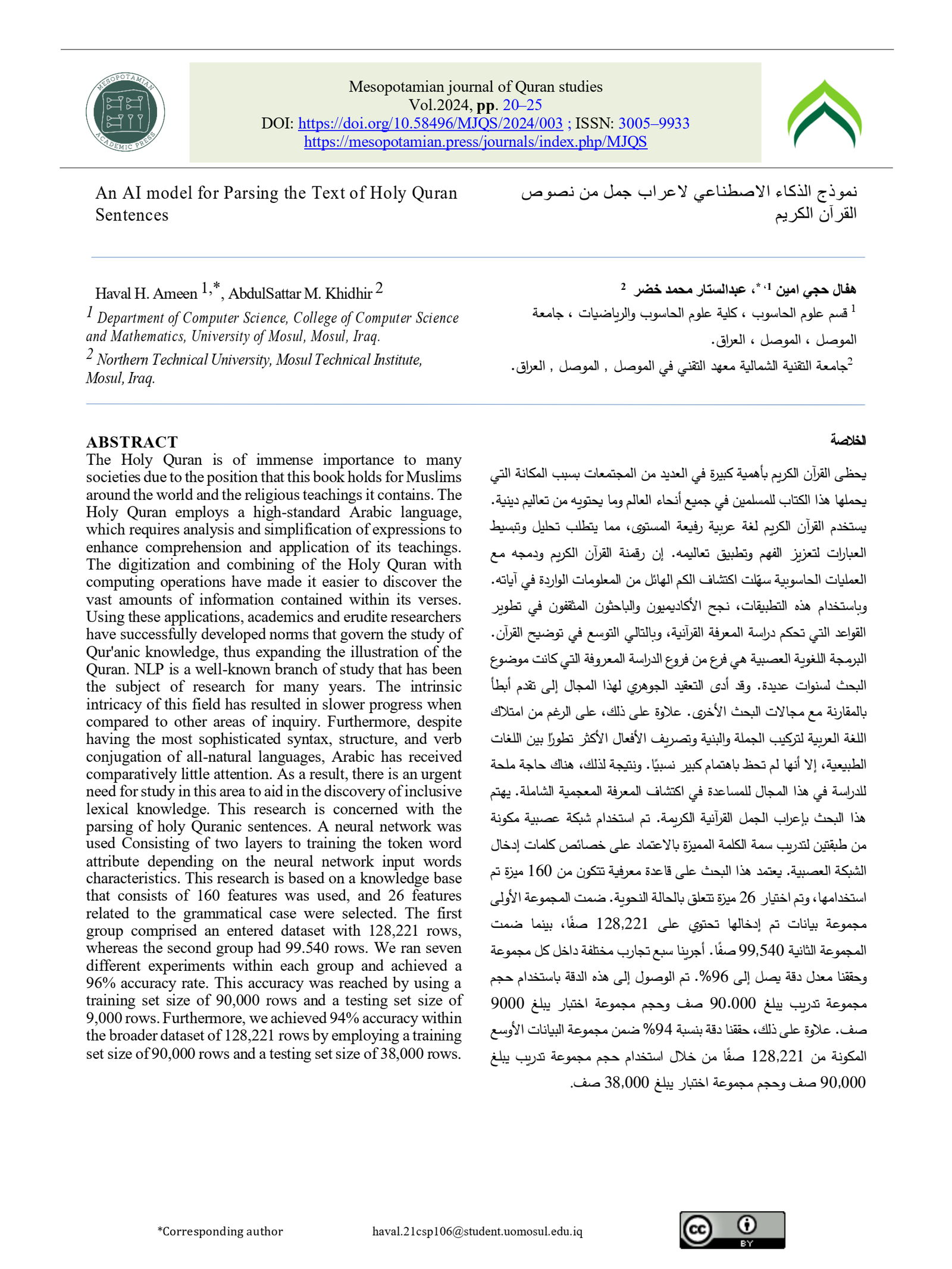An AI model for Parsing the Text of Holy Quran Sentences
Main Article Content
Abstract
The Holy Quran is of immense importance to many societies due to the position that this book holds for Muslims around the world and the religious teachings it contains. The Holy Quran employs a high-standard Arabic language, which requires analysis and simplification of expressions to enhance comprehension and application of its teachings. The digitization and combining of the Holy Quran with computing operations have made it easier to discover the vast amounts of information contained within its verses. Using these applications, academics and erudite researchers have successfully developed norms that govern the study of Qur'anic knowledge, thus expanding the illustration of the Quran. NLP is a well-known branch of study that has been the subject of research for many years. The intrinsic intricacy of this field has resulted in slower progress when compared to other areas of inquiry. Furthermore, despite having the most sophisticated syntax, structure, and verb conjugation of all-natural languages, Arabic has received comparatively little attention. As a result, there is an urgent need for study in this area to aid in the discovery of inclusive lexical knowledge. This research is concerned with the parsing of holy Quranic sentences. A neural network was used Consisting of two layers to training the token word attribute depending on the neural network input words characteristics. This research is based on a knowledge base that consists of 160 features was used, and 26 features related to the grammatical case were selected. The first group comprised an entered dataset with 128,221 rows, whereas the second group had 99.540 rows. We ran seven different experiments within each group and achieved a 96% accuracy rate. This accuracy was reached by using a training set size of 90,000 rows and a testing set size of 9,000 rows. Furthermore, we achieved 94% accuracy within the broader dataset of 128,221 rows by employing a training set size of 90,000 rows and a testing set size of 38,000 rows.
Article Details
Issue
Section

This work is licensed under a Creative Commons Attribution-ShareAlike 4.0 International License.
Deprecated: json_decode(): Passing null to parameter #1 ($json) of type string is deprecated in /home/u273879158/domains/mesopotamian.press/public_html/journals/plugins/generic/citations/CitationsPlugin.php on line 68
